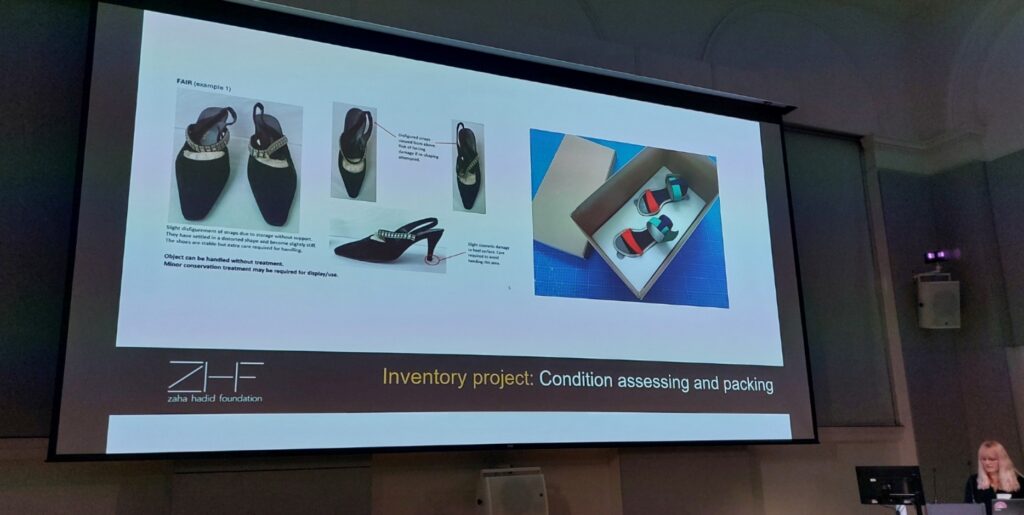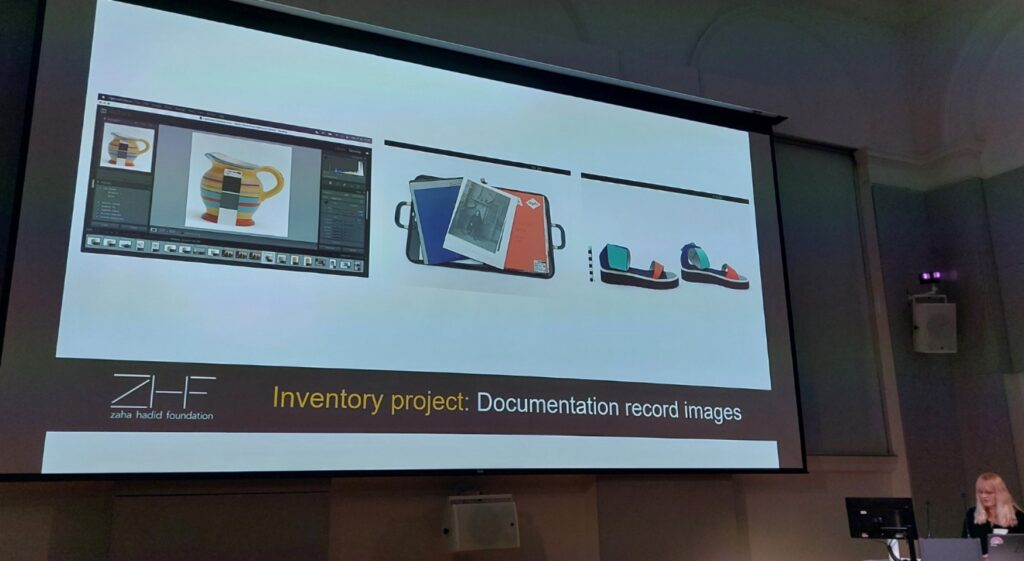Archiving Architects: Inventing the Inventory – Helen Merrett, Registrar (Collections), Zaha Hadid Foundation
Blog post written by Rachel Coman, Collections Assistant, National Trust – Montacute House
Developing the inventory for a unique collection which celebrates the contribution Dame Zaha Hadid made to contemporary architecture, is in many ways a ground breaking way of working with, and sharing collections.
Prior to attending the UKRG Annual General Meeting, I spent some time refreshing my memory of the designs created by Dame Zaha Hadid, and this was far easier than I imagined. The designs include iconic buildings such as the London Aquatics Centre designed for London 2012, and the Glasgow Riverside Museum.
The ZHF collection is stored across multiple sites, which is not uncommon for collections, however the collection was originally located across several countries and this added to the complexity of bringing the collection together across a number of locations, including Bowling Green Lane, Studio 9 and Shad Thames (the former Design Museum site).
The project aims, which I think are valuable to reflect on, are listed below:
- Create a basic inventory
- Work towards Spectrum standards ISAD (G)
- Rehouse the collection
- Identify audit and research priorities
- Create a reference library
- Disposal

Disposal can be a tricky process to navigate. The ZHF collection contained some opened toiletry items which were difficult to stabilise to prevent deterioration and contamination. There were also a number of duplicate items.
To add to the complexity of the project, Helen outlined that there were a number of collection systems in use by the ZHF including:
- J-media data (ZHA bespoke system)
- iPad app (personal collections)
- Open Asset (DAMS)
- TMS Collections
There were core actions such as improving the racking system so it was fit for purpose and could support different collection items in multiple locations. Larger and unusual shaped items were palletised. There was also a consideration of crated items to enable safe and effective movement within the collections space.

With a complex project and multiple work streams, process development was vital. This included developing a workflow and agreeing priorities. People were at the heart of the project – an example of this was the need to recruit an inventory team.
During the project, it was important not to underestimate procedures, such as inventory, cataloguing policies, and collections management procedures. Key inventory fields were developed alongside an updated spreadsheet of collection items.
A clear condition assessing and packing process was established. Personally, I regularly condition check items at Montacute House and have experienced different approaches to packaging and recording images. Inconsistency can be tricky to navigate and creates additional work rectifying.

So far over 3,000 items have been inventoried – a third of these have been photographed and repacked. As an outsider, the project was rather successful and the Zaha Hadid Foundation website bears testament to that. Yet there were valuable learnings, such as managing expectations with internal stakeholders and personal expectations.

When working with collections it’s important to remember to advocate for our skills and sometimes the hardest thing is saying ‘no’ and pushing back. When managing collections, advocating and embracing the process development is equally tough, but a valuable part of the process.
The major take aways from Helen’s presentation were the ongoing development of the inventory – it simply isn’t a one-off activity. The thing I am personally reflecting on and putting into practice is advocating for our collection to ensure documentation, packing and images are meeting accreditation standards and the paper trail is clear and straightforward for anyone caring for the collection in the future.

Rachel Coman, Collections Assistant, National Trust – Montacute House
Images courtesy of Rachel Coman, Collections Assistant, National Trust – Montacute House.

 Instagram
Instagram  LinkedIn
LinkedIn  Twitter
Twitter  My Account
My Account